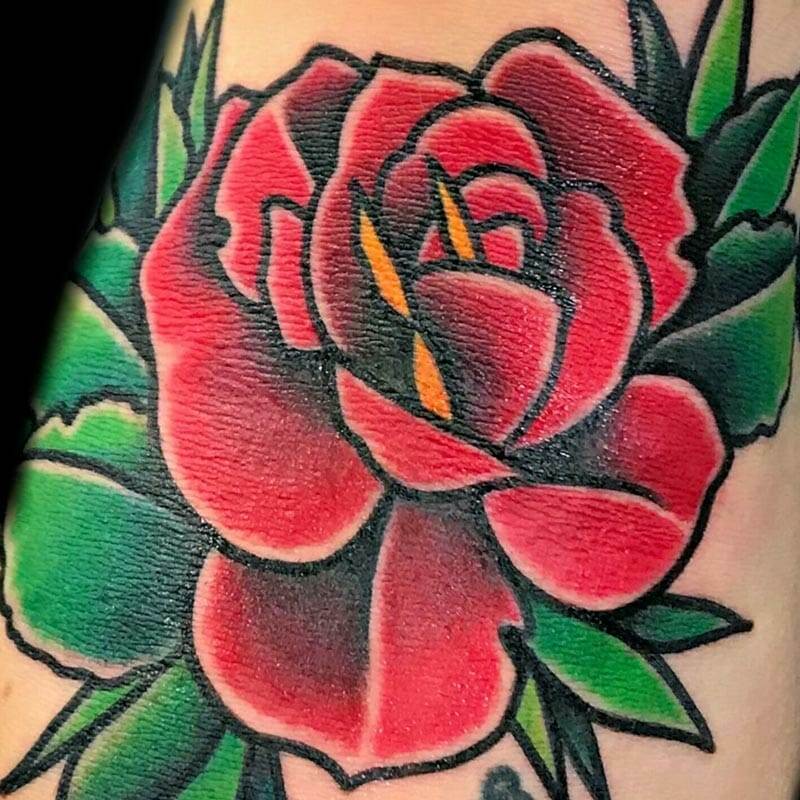Tattooing is a form of art that has been practiced for centuries. It involves the insertion of ink into the skin to create permanent designs or images. Tattoos can be seen as a way for individuals to express themselves, tell their stories, or simply adorn their bodies with beautiful artwork. Over time, tattooing has evolved into a highly skilled and respected art form, with artists specializing in various styles and techniques.
The History of Colorful Tattoos
Colorful tattoos have a long history that dates back thousands of years. The ancient Egyptians were known to have colorful tattoos, using pigments made from natural materials such as plants and minerals. These tattoos were often symbols of status or protection and were considered sacred. In other cultures, colorful tattoos were used to mark important life events or to signify membership in a particular group.
The cultural significance of colorful tattoos varies across different societies. In some cultures, they are seen as a form of self-expression and individuality, while in others they may hold religious or spiritual significance. For example, in Polynesian cultures, colorful tattoos called “tatau” are deeply rooted in their traditions and represent a person’s genealogy, social status, and personal achievements.
The evolution of colorful tattoo styles has been influenced by advancements in tattooing techniques and the availability of a wider range of pigments. Today, artists can create vibrant and intricate designs using a vast array of colors. From traditional American-style tattoos with bold outlines and bright colors to more realistic and detailed pieces, the possibilities for colorful tattoos are endless.
The History of Black and Gray Tattoos
Black and gray tattoos have a rich history that can be traced back to ancient times as well. In many cultures, black ink was the primary pigment used for tattooing due to its availability and durability. These tattoos were often simpler in design and focused on bold lines and shading techniques to create depth and dimension.
The cultural significance of black and gray tattoos also varies across different societies. In some cultures, they are associated with spirituality or protection, while in others they may be seen as a form of rebellion or counterculture. For example, in Japanese culture, black and gray tattoos known as “irezumi” have a long-standing tradition and are often associated with the yakuza, or Japanese mafia.
The evolution of black and gray tattoo styles has been influenced by advancements in tattooing equipment and techniques. Today, artists can create highly detailed and realistic black and gray tattoos using shading techniques such as stippling, hatching, and cross-hatching. From portraits to intricate geometric designs, black and gray tattoos offer a timeless and classic look.
The Pros of Colorful Tattoos
One of the main advantages of colorful tattoos is their vibrant and eye-catching appearance. Colorful tattoos can be bold and attention-grabbing, making them a great choice for individuals who want their tattoos to stand out. The use of bright colors can also enhance the overall design and make it more visually appealing.
Colorful tattoos also allow for more creative expression. With a wide range of colors to choose from, artists can create intricate and detailed designs that incorporate various shades and hues. This gives individuals the opportunity to have a truly unique and personalized tattoo that reflects their personality or tells their story.
Another advantage of colorful tattoos is that they can effectively cover up scars or blemishes on the skin. The use of vibrant colors can help to camouflage imperfections and create a more seamless look. This can be particularly beneficial for individuals who want to conceal scars or marks that may be a source of insecurity.
The Cons of Colorful Tattoos

One of the main drawbacks of colorful tattoos is that they tend to fade and discolor over time. The pigments used in colorful tattoos are more prone to fading due to exposure to sunlight, aging, and the natural healing process of the skin. This means that colorful tattoos may require touch-ups or color enhancements over time to maintain their vibrancy.
Another disadvantage of colorful tattoos is that they are generally more painful and time-consuming to create. The process of injecting multiple colors into the skin can be more uncomfortable compared to black and gray tattoos, which typically involve fewer needle passes. Additionally, creating a colorful tattoo often requires more time and skill on the part of the artist, which can result in higher costs.
Colorful tattoos may also limit job opportunities or social acceptance in certain settings. While tattoos have become more mainstream in recent years, there are still some professions or environments where visible tattoos may be frowned upon or even prohibited. It is important for individuals considering colorful tattoos to carefully consider the potential impact on their personal and professional lives.
The Pros of Black and Gray Tattoos
One of the main advantages of black and gray tattoos is their timeless and classic look. Black ink has a certain elegance and simplicity that can withstand the test of time. Black and gray tattoos are less likely to fade or discolor over time compared to colorful tattoos, making them a popular choice for individuals who want a long-lasting tattoo.
Black and gray tattoos are also generally easier and less painful to create. The process of tattooing with black ink involves fewer needle passes compared to injecting multiple colors into the skin. This can result in a quicker and less uncomfortable experience for individuals getting black and gray tattoos.
Another advantage of black and gray tattoos is their versatility. Black ink can be incorporated into various tattoo styles, from traditional to realistic, making it suitable for a wide range of designs. Black and gray tattoos can also be easily combined with other colors if desired, allowing for more creative possibilities.
The Cons of Black and Gray Tattoos
One potential drawback of black and gray tattoos is that they may not be as visually striking as colorful tattoos. While black and gray tattoos can be highly detailed and realistic, they may not have the same level of vibrancy and visual impact as colorful tattoos. This is something to consider for individuals who want their tattoos to be bold and attention-grabbing.
Another disadvantage of black and gray tattoos is the limited color options. While black ink can create various shades and gradients, it cannot replicate the full spectrum of colors that can be achieved with colorful tattoos. This may be a drawback for individuals who want a tattoo with specific colors or who prefer a more vibrant look.
Black and gray tattoos may also not be suitable for covering up scars or blemishes on the skin. The lack of color can make it more challenging to effectively camouflage imperfections and create a seamless look. Individuals who are looking to cover up scars or marks may need to consider other tattoo styles or techniques.
The Cost of Colorful vs. Black and Gray Tattoos
The cost of a tattoo can vary depending on several factors, including the size, complexity, and location of the design, as well as the reputation and experience of the artist. Generally, colorful tattoos tend to be more expensive than black and gray tattoos due to the additional time, skill, and materials required.
Colorful tattoos often require multiple sessions to complete, as each color needs to be applied separately. This means that individuals getting colorful tattoos may need to budget for multiple appointments and potentially higher overall costs. Additionally, the use of high-quality pigments for colorful tattoos can also contribute to higher prices.
On the other hand, black and gray tattoos typically require fewer sessions to complete, as they involve fewer colors and shading techniques. This can result in lower overall costs compared to colorful tattoos. However, it is important to note that the cost of a tattoo should not be the sole determining factor when choosing between colorful and black and gray tattoos. It is essential to prioritize the skill and experience of the artist and the quality of the final result.

The Healing Process of Colorful vs. Black and Gray Tattoos
The healing process of a tattoo can vary depending on several factors, including the size and location of the design, as well as individual factors such as skin type and overall health. Generally, colorful tattoos may take longer to heal compared to black and gray tattoos due to the multiple layers of ink that need to settle in the skin.
After getting a colorful tattoo, it is important to follow proper aftercare instructions to minimize discomfort and promote healing. This typically involves keeping the tattoo clean and moisturized, avoiding direct sunlight or excessive sweating, and refraining from picking or scratching at the tattooed area. It is also important to avoid submerging the tattoo in water, such as swimming or taking long baths, until it is fully healed.
Black and gray tattoos generally have a shorter healing time compared to colorful tattoos. The lack of multiple colors and layers of ink allows for a quicker healing process. However, it is still important to follow proper aftercare instructions to ensure optimal healing and prevent complications such as infection or scarring.
Making the Right Choice for Your Tattoo
In conclusion, choosing between colorful and black and gray tattoos ultimately comes down to personal preferences and goals. Both styles have their own unique advantages and disadvantages, and it is important to carefully consider these factors before making a decision.
Colorful tattoos offer a vibrant and eye-catching look that allows for more creative expression. They can effectively cover up scars or blemishes but may fade over time and require more time, skill, and maintenance. On the other hand, black and gray tattoos offer a timeless and classic look that is easier to create and maintain. They may not be as visually striking as colorful tattoos and have limited color options.
When choosing a tattoo artist, it is important to research and vet potential artists who specialize in your preferred style. Schedule a consultation to discuss your ideas and expectations before booking an appointment. Ultimately, the most important thing is to choose a tattoo style that aligns with your personal preferences and goals, ensuring that you will be happy with your tattoo for years to come.



